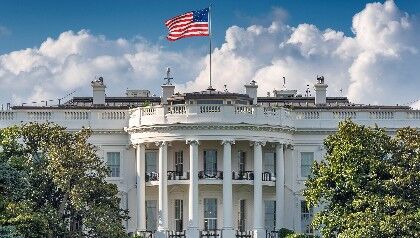Just about every week we are asked by a client to help them on some aspect of a Mentor-Protégé (“M-P”) Program or a Joint Venture (“JV”) under an M-P that is bidding on a contract or just won a contract. The Small Business Administration (“SBA”) 8(a) M-P Program has been around for a number of years and many companies, both large and small, have benefited from the program. Following on that success in July 2016, the SBA established the All Small Mentor-Protégé Program (“ASMPP”) to extend the SBA approved mentor-protégé relationships to every small business. The ASMPP was designed with the 8(a) M-P program as a model, but there are some differences.
The All Small Mentor-Protégé Program, which applies to all small businesses — including 8(a) Program participants, Historically Underutilized Business Zone (“HUBZone”) small businesses, veteran-owned and service-disabled veteran-owned small businesses (“VOSB/SDVOSBs”), woman-owned and economically disadvantaged woman-owned small businesses (“WOSBs/EDWOSBs”) — is designed to “require approved mentors to aid protégé firms so that they may enhance their capabilities, meet their business goals, and improve their ability to compete for contracts.” The “explicit purpose” of the 8(a) BD mentor-protégé relationship is to “enhance the capabilities of protégés and to improve their ability to successfully compete for both government and commercial contracts.”
In November 2019, the SBA proposed to merge the 8(a) Business Development (“BD”) Mentor-Protégé Program and the All Small Mentor-Protégé Program to eliminate confusion and remove unnecessary duplication of functions within the SBA. The rule was proposed to:
- Eliminate the requirement that 8(a) Participants seeking 8(a) contracts as a joint venture submit the joint venture agreement to SBA for review and approval prior to contract award;
- Revise several 8(a) Business Development Program regulations to reduce unnecessary or excessive burdens on 8(a) participants and clarify other related regulatory provisions to eliminate confusion among small businesses and procuring activities;
- Requires firms to recertify their size and/or socioeconomic status for all set-aside orders under unrestricted multiple award contracts (“MACs”), except for orders and Blanket Purchase Agreements issued under the General Services Administration’s Federal Supply Schedule Program;
- Require firms to recertify their socioeconomic status for all set-aside orders where the required socioeconomic status for the order differs from that of the underlying set-aside MAC contract (e.g., HUBZone set-aside order against a small business set-aside MAC); and
- Allow for size and/or socioeconomic protests issued against unrestricted MACs, or for set-aside orders based on a different socioeconomic status from the underlying set-aside MAC except for orders or Blanket Purchase Agreements issued under any Federal Supply Schedule contract.
The SBA received 183 comments on the proposed rule revisions in February 2020 with many strong views on some of the proposed changes. The two proposed changes that seem to have received the most comments include: (1) A requirement for recertification for certain orders under unrestricted multiple award contracts; and (2) the SBA consideration to limit mentors only to those firms having average annual revenues of less than $100 million. Both of these changes, if finalized, could have significant impacts on the program. While it is unknown how or when the final regulations will be issued, it is fairly safe to say that M-P arrangements and JVs under these programs are probably here to stay and will continue to be a good opportunity for both parties.
Under either program, JVs are a form of teaming arrangement that can be beneficial to both the government and the companies involved. The reason for forming most JVs is to enhance the participants’ chances of receiving an award. While we have seen some great outcomes for both protégé companies and mentor companies, this is not always the case. It is important to consider the potential benefits to each party, but also what each brings to the table. Is it a good fit and mutually beneficial for both parties? In determining whether to form an M-P and subsequent JV, each potential participant should examine its own capabilities and those of the other party. This examination should include:
- Technical Capabilities
- Financial Capabilities Required for Potential Contracts: Note that many procurements include a requirement that the contractor have an “approved” accounting system, and sometimes also “approved” estimating system and “approved” purchasing system.
- Management Mapabilities: The Protégé has many stated management requirements in the program.
- Past Performance Record of the Potential Participants: Because of the emphasis placed on past performance today, being able to enhance your past performance rating may be a significant factor in deciding whether to form a JV.
- Marketing Capabilities: This factor may not be given much thought, but would be a major consideration in regard to indefinite delivery contracts under which orders can be placed by differing activities.
Finally, a topic that probably does not get as much attention as it should is the ability of the potential JV participants to work together. If the parties of a JV cannot work together, then contract performance can be jeopardized. Until any new final rules are adopted, the two current programs are in place and we expect to continue to see significant growth and use of this form of contracting.
If you have questions concerning any of these issues or other contracting matters, do not hesitate to contact Cherry Bekaert for advice and assistance.



